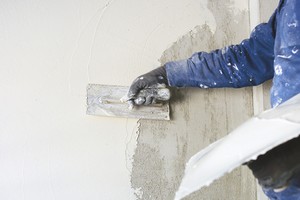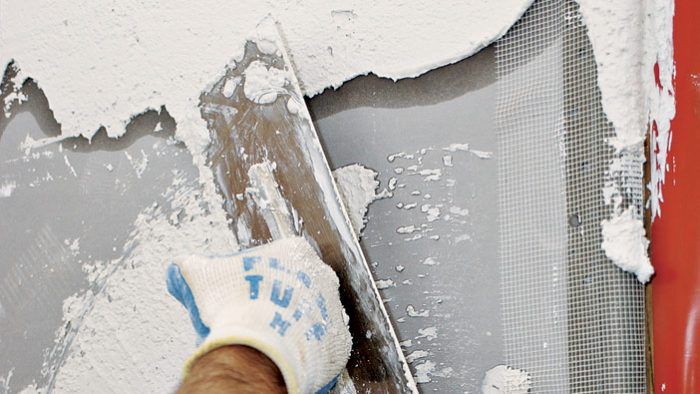Plastering Providers Near Me: Find Trusted Neighborhood Plastering Experts
Comprehending the Important Techniques of Plastering for Home Enhancement Projects
In the world of home improvement, grasping the important techniques of gluing can dramatically enhance both the performance and aesthetic allure of a room. The plastering process encompasses crucial phases, from meticulous surface area preparation to the exact application of products.
Kinds Of Smudging Techniques
Although different gluing techniques exist, each serves a special purpose and provides distinct visual high qualities. One of the most common techniques is standard lime plastering, which is known for its breathability and flexibility. This strategy is particularly useful for older frameworks, enabling wetness to escape while preserving structural stability.
For a much more distinctive appearance, trowel-on plastering methods such as stucco and Venetian plaster are frequently utilized. Stucco, typically utilized in outsides, provides sturdiness and weather resistance, while Venetian plaster is renowned for its elegant, polished surface.
Additionally, there are more specialized techniques, such as skimming, which is a process that includes using a thin layer of plaster over existing surfaces to create a smooth coating. Each of these strategies can drastically influence the general aesthetic and capability of a room, making it necessary to select the proper approach based on the certain demands of a project.

Tools and Products Needed

The hawk serves as a system to hold the plaster, while the trowels, offered in different dimensions, are important for application and smoothing. A float, usually made of rubber or sponge, is used to attain an uniform finish.

Spending in top quality devices and materials inevitably contributes to a much more effective gluing task, yielding a durable and cosmetically pleasing coating. Properly furnished, you lay the foundation for reliable smudging and home renovation.
Step-by-Step Plastering Process
With the right tools and materials in hand, the following phase involves executing the smudging procedure with accuracy. Begin by preparing the surface area to make certain optimal bond. Get rid of any type of loose particles, dirt, or old plaster, and apply a bonding representative if needed.
Once the surface is prepped, blend the plaster according to the supplier's instructions, achieving a smooth, lump-free consistency. Utilizing a trowel, use the initial layer, recognized as the scratch coat, to a thickness of about 5-10 mm. Make sure uniform protection, and utilize a comb or scratcher to produce grooves for much better bond of subsequent layers.
After enabling the scratch layer to set partly, use the second layer, or the brown coat, smoothing it out for an even coating. Apply the finishing coat, which ought to be thinner and smoother.
Once the plaster has actually dried out thoroughly, it can be sanded gently to eliminate imperfections. Adhere to up with a guide prior to painting for a sleek final appearance.
Typical Blunders to Avoid
Falling short to identify typical errors can considerably impact the top quality of your plastering task. Neglecting to fix any underlying problems, such as moisture or structural damages, can compromise the plaster's honesty.

Timing is also vital; numerous unskilled plasterers rush the application. Allowing the initial layer to completely next dry totally before using subsequent layers is necessary to stop extreme fracturing and shrinking.
Furthermore, not making use of the right tools can prevent the finishing process. Making use of trowels that are also huge or small can affect your control and the level of smoothness of the finish - Plastering. Finally, overlooking ecological conditions, such as temperature level and humidity, can result in irregular drying out and disappointing outcomes. By bearing in mind these typical pitfalls, you can enhance the efficiency and long life of your plastering job.
Tips for Finishing Touches
Attaining a remarkable finish in plastering needs attention to information and a few critical methods. As soon as the initial application has actually dried, begin the ending up procedure by utilizing a damp sponge or trowel to smooth out any blemishes. This step not just improves the surface area yet also aids to remove any kind of excess plaster that may have dried unevenly.
Following, think about making use of a fine-grit sanding block or pole sander for a more refined appearance. Sanding need to be done carefully to prevent harming the underlying layer - Plastering. Constantly put on a mask to secure versus dirt breathing
After sanding, examine the surface under various lights problems to determine any type of missed out on disparities or places. Apply a thin layer of ending up plaster if essential, feathering out the sides to blend perfectly with the bordering area.
Verdict
In conclusion, understanding essential plastering strategies considerably enhances the high quality of home renovation jobs. Comprehending the different types of plastering methods, utilizing suitable more info here devices and materials, and sticking to an organized application process add to accomplishing a smooth and resilient coating.
In the realm of home renovation, understanding the essential strategies of gluing can substantially enhance both the capability and aesthetic appeal of an area.Although different plastering methods exist, each serves a distinct purpose and uses distinctive aesthetic qualities. Plastering. here are the findings For a much more textured appearance, trowel-on plastering strategies such as stucco and Venetian plaster are typically employed. Stucco, generally used in outsides, gives resilience and climate resistance, while Venetian plaster is renowned for its luxurious, sleek finish
Frequently made use of plaster kinds include gypsum plaster, lime plaster, and cement-based plaster, each serving different objectives and settings.